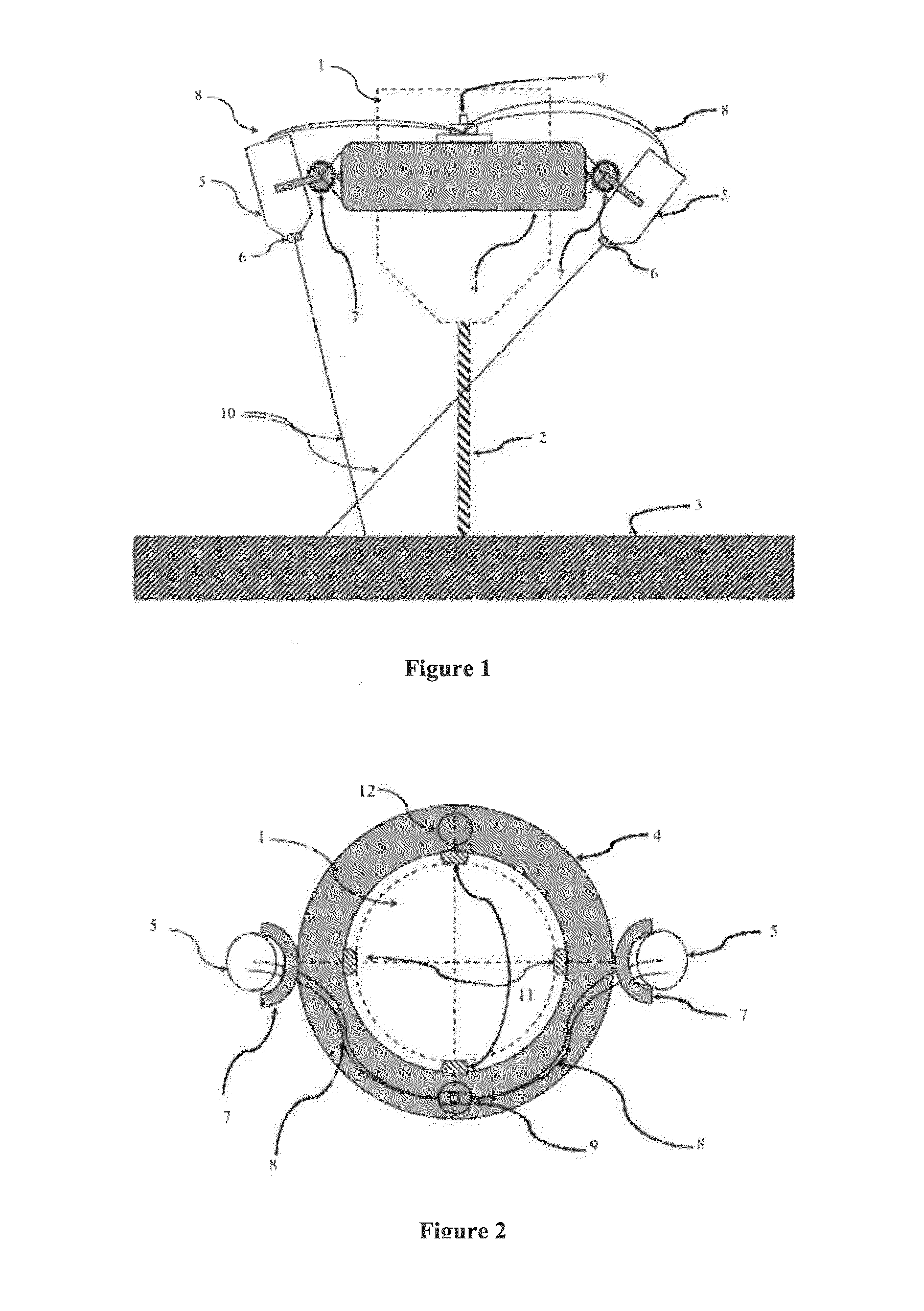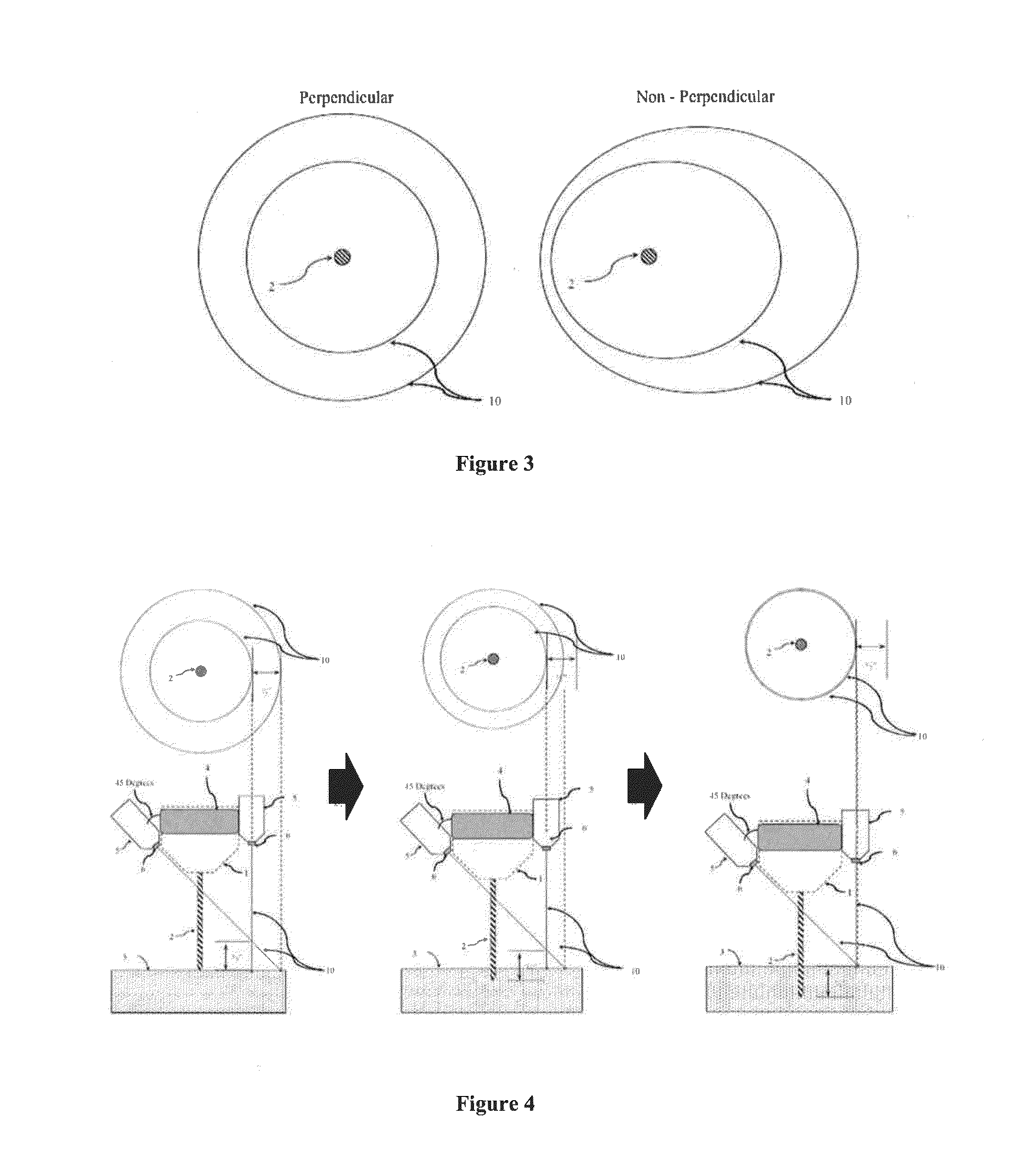Power Drill Alignment and Depth Measurement Device
a technology of depth measurement and power drill, which is applied in the direction of portable power tools, manufacturing tools, transportation and packaging, etc., can solve the problems of cumbersome carrying depth stops for each drill bit size, difficulty in inability to achieve physical or visual alignment, etc., to achieve efficient and economical means of alignment
- Summary
- Abstract
- Description
- Claims
- Application Information
AI Technical Summary
Benefits of technology
Problems solved by technology
Method used
Image
Examples
second embodiment
[0082]the invention with fixed angles of the lasers, non-perpendicular to the work surface, that creates concentric circles near the drill bit, is shown in FIG. 5. The preferred angles for the lasers in this embodiment are one fixed angle (e.g., 15 degrees) and one 45 degree angle measured off the line parallel to the drill bit longitudinal axis. Other angles are also acceptable. This design eliminates the need for the operator to adjust the angle of incidence of the lasers for simpler operation.
third embodiment
[0083]FIG. 6 shows the invention utilizing a single laser, set a 0 degrees measured off the line parallel to the drill bit longitudinal axis used in conjunction with the track template as shown in FIG. 7. The light trace is at fixed diameter parallel to the drill bit longitudinal axis and equal to the trace template, which acts as a target for the rotating beam. A perpendicular alignment will result in a steady illumination of the light on the reflective track and resultant dark spots if the drill bit alignment is not a perpendicular.
[0084]FIG. 8 demonstrates the use of a translucent plane to assist operators in utilizing the invention on work surfaces that are very small, narrow or have a complex topography.
[0085]FIG. 9 shows an illustrative design of an elliptical template that can be used with the invention to provide alignment when drilling non-perpendicular holes, e.g. 30, 45, 60, by setting the laser angles to 0 degrees
PUM
| Property | Measurement | Unit |
|---|---|---|
| Angle | aaaaa | aaaaa |
| Angle | aaaaa | aaaaa |
| Angle | aaaaa | aaaaa |
Abstract
Description
Claims
Application Information
 Login to View More
Login to View More - R&D
- Intellectual Property
- Life Sciences
- Materials
- Tech Scout
- Unparalleled Data Quality
- Higher Quality Content
- 60% Fewer Hallucinations
Browse by: Latest US Patents, China's latest patents, Technical Efficacy Thesaurus, Application Domain, Technology Topic, Popular Technical Reports.
© 2025 PatSnap. All rights reserved.Legal|Privacy policy|Modern Slavery Act Transparency Statement|Sitemap|About US| Contact US: help@patsnap.com



